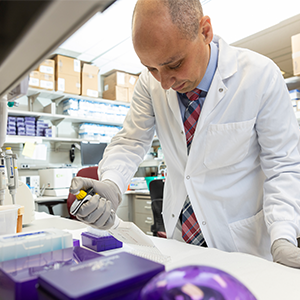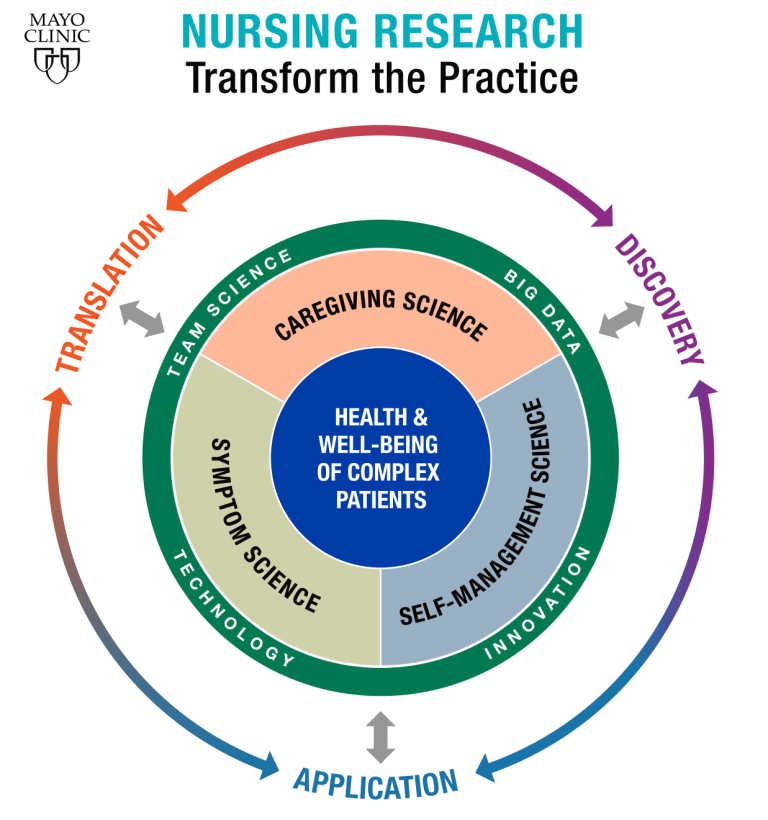-
2018 a year of advancements for Mayo Clinic’s Nuclear Medicine Division

ROCHESTER, Minn. — Mayo Clinic’s Nuclear Medicine Division on Mayo Clinic's Arizona, Florida and Minnesota campuses significantly increased services provided to clinical and research patients in 2018. The division debuted a new therapeutic-diagnostic, or “thera-nostic,” practice, joined major research trials, and advanced radiotracer production capabilities.
In Mayo’s thera-nostic practice, a therapeutic agent is paired with a diagnostic imaging agent of almost identical molecular structure. Patients are imaged with a positron emission tomography (PET) scanner, treated with a radioactive chemotherapy, and rescanned to determine if the therapy was effective.
“The concept is, if we can see it, we can treat it; and if we can then no longer see it, it’s dead,” says Geoffrey Johnson, M.D., Ph.D., chair, Division of Nuclear Medicine.
Mayo Clinic begins first clinical lutetium Lu 177 dotatate treatment
Mayo Clinic’s Arizona, Florida and Minnesota campuses have begun administering the first clinical lutetium Lu 177 dotatate treatment regimen to patients. The treatment is administered over four closely monitored sessions.
Lu 177 dotatate was approved in January by the Food and Drug Administration (FDA) to treat neuroendocrine tumors. The addition of this thera-nostic practice to treat neuroendocrine tumors was made possible in part because of clinical trials held at Mayo Clinic and other institutions. Mayo Clinic’s Division of Nuclear Medicine and Department of Medical Oncology are working together closely on a multidisciplinary approach to make the most appropriate treatment decisions.
Mayo Clinic begins treatment on first Vision trial patient
Mayo Clinic already has treated more than 30 patients with the new drug Lu 177 prostate-specific membrane antigen (Lu 177-PSMA-617) as part of the phase III Vision trial, which is scheduled to span 80 sites across North America and Europe and will enroll 750 randomized patients. Mayo Clinic’s Rochester campus was the third site worldwide to fully initiate the study.
In the trial, Lu 177-PSMA-617 is administered in four to six doses ─ one every six weeks ─ to treat progressive metastatic castration-resistant and chemotherapy-resistant prostate cancer. When the therapeutic agent is injected into the body, the prostate-specific membrane antigen peptide in the drug finds and binds itself to receptors on the cancer cells’ surface. The therapeutic radioactive agent, Lu 177, then enters the cancer cell membrane, radiating and killing the cells.
As the trial progresses, “we’ll find out whether or not their cancer stops progressing or continues to progress, compared to people who are just getting standard therapy,” Dr. Johnson says. “These patients’ metastatic prostate cancer already failed pretty much everything we can throw at it. It’s failed surgery, radiation, chemotherapy, hormonal therapy, and it’s still progressing. … These patients have very few, if any, options other than palliative care.”
At Mayo Clinic, the trial is a collaborative endeavor among Radiology, Radiation Safety, Urology and Oncology. The principal investigators for this trial are Tuba Kendi, M.D., diagnostic radiologist at Mayo Clinic in Rochester, Winston Tan, M.D., a hematologist/oncologist at Mayo Clinic in Florida, and Alan Bryce, M.D., a hematologist/oncologist in Arizona.
The Vision trial is funded by Endocyte, a biopharmaceutical company that develops targeted therapies for the treatment of cancer.
FDA approves Mayo Clinic’s investigational new drug application
Timothy DeGrado, Ph.D., and Mukesh Pandey, Ph.D., radiology researchers working in PET radiochemistry, have developed a new way to produce gallium Ga 68 dotatate, a radiotracer, or radioactive tracer. A radiotracer is a radioactive isotope that is used to detect cancer. There is a worldwide shortage of Ga 68 dotatate because of the traditional manufacturing process. When Mayo Clinic injects a patient with its first batch of this new version of the radiotracer, it likely will be the first institution in the world to do so.
Ga 68 usually is produced in a generator, but Mayo Clinic now has approval, through an investigational new drug application, from the FDA to produce gallium in its cyclotron through a method pioneered by Drs. DeGrado and Pandey. The gallium will be paired with PSMA-11 to help in imaging metastatic prostate cancer and identify patients who may benefit from Lu 177 PSMA-617 therapy.
Mayo Clinic researchers will compare this new imaging process to standard imaging techniques like Choline C-11 with PET/CT to define which method is better for which group of patients. “There is growing knowledge that both Choline C-11 and Ga-PSMA, although very powerful, are not able to find all disease in every patient, and we believe there is likely to be complimentary benefits from each radiotracer in patients with prostate cancer.”
New radiotracer, F18-DOPA, approved for glioblastoma multiforme imaging
The FDA has approved an investigational new drug application for fluorine-18-desoxyphenylalanine (F18-DOPA), a PET scan radiotracer, submitted by Ming Yang, M.D., Nuclear Medicine Division, on Mayo Clinic’s Arizona campus. This adds to the robust work with F18-DOPA on Mayo’s Rochester campus.
This investigational PET tracer will be used for a multicenter phase II clinical trial for glioblastoma imaging performed on PET/MRI scanners. In addition, F18-DOPA may be used for research related to Parkinson’s disease, insulinoma, a tumor of the pancreas, and pheochromocytoma, a small vascular tumor of the adrenal medulla. During the application process, Kristin Graf, Ph.D., the supervisor of PET radiochemistry on Mayo Clinic’s Arizona campus, has been working closely with the PET radiochemistry teams on the Florida and Rochester campuses to optimize the synthesis of F18-DOPA and prepare prompt responses to the FDA’s information requests. It reflects a cross-enterprise collaboration that improves the overall quality on Mayo Clinic’s Arizona, Florida and Minnesota campuses, and benefits future PET investigational new drug applications.
###
About Mayo Clinic
Mayo Clinic is a nonprofit organization committed to clinical practice, education and research, providing expert, comprehensive care to everyone who needs healing. Learn more about Mayo Clinic. Visit the Mayo Clinic News Network.
Media contact:
- Ethan Grove, Mayo Clinic Public Affairs, 507-284-5005, newsbureau@mayo.edu







